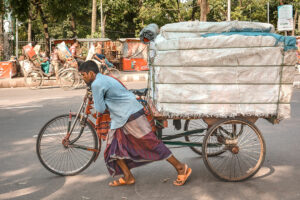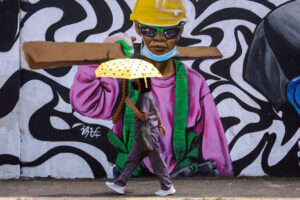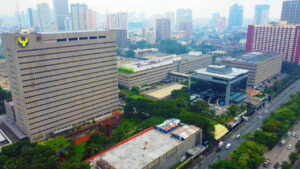The roots of Bangladesh’s success

Bangladesh’s story shows how a country can drastically cut unemployment by empowering the grassroots.
Bangladesh has risen from being an economic basket case to one of the fastest-growing economies in the world. From a nation once plagued with an unemployment rate of 80%, only 13.8% of the Bangladeshi people are unemployed today (lower than the Philippines at 18.1%) and 60% of its population have been lifted out of poverty. Its economy has expanded by an average rate of 6.44% in the last decade, even despite the pandemic. The size of its economy surpassed that of the Philippines in 2020.
Bangladesh’s story starts in 1947 when Pakistan and India split into two nations. Back then, Bangladesh was known as East Pakistan, a province separated from the Pakistani mainland by 1,800 kilometers of Indian territory. In 1971, Sheikh Mujibur Rahman became Prime Minister. Rahman led the campaign for Bangladesh’s independence from Pakistan.
The Pakistani government dealt with the separatist movement with a heavy hand. Under the command of General Tikka Khan, the Pakistani army attempted to quash the Bengalis via a bloody massacre. Millions were killed in this macabre crusade that lasted nine months.
But the Pakistani army made one crucial mistake. It attacked an Indian airfield in one of its raids. This gave India legal justification to join the war and defend Bangladesh. The Indian army quashed the Pakistani forces and, in just two weeks, liberated the besieged Bengalis. The republic of Bangladesh was born.
Just as the young nation was reeling from the ravages of war, the world’s strongest typhoon on record hit the new republic. Three hundred thousand people were killed and billions worth of infrastructure was destroyed. This was the lowest point of Bangladesh as 80% of the population were without jobs, decent housing, healthcare, and food.
The oil boom in the Middle East during the 1970s provided relief for the Bengali people. Like the Philippines, Bengalis left the country to work in oil fields. The remittances they provided kept the country afloat. It triggered a consumption boom and provided government with valuable foreign exchange revenues. Bangladesh prioritized spending on education and liberally granted collateral-free loans to students.
Bangladesh’s turning point came in 1983 when Muhammad Yunus established the Grameen Bank. The Grameen Bank is a specialized microfinance and community development organization that grants small loans to the impoverished without requiring collateral or a credit history. The bank focused on lending to groups of women who are involved in a business.
How does the Grameen model work? Say there are 10 women in a group involved in basket weaving. Each member contributes 100 Bengali Takas to a pot to come up with 1,000 takas. This amount is used as insurance to obtain a 10,000-Taka loan from the Grameen Bank. The loan goes towards basket production and selling. When the loan falls due, collection is made from the group, not its singular members. Peer pressure, shame, and integrity work to guarantee that the loan is repaid.
As the group’s contribution increases with every passing renewal and with a credit history established, the group is able to secure larger amounts of credit. This allows them to expand their businesses.
Just 10 years after Grameen model started, more than one billion dollars was disbursed to two million groups of women. Each group represents a single micro, small and medium scale business. Loan repayment rates are above 90%.
The microloans empowered the poor and helped them climb out of poverty. Slowly and steadily, jobs and wealth were created from the grassroots. Many of these groups matured to become medium and large businesses. They form the country’s industrial base today.
When the garments boom occurred at the turn of the century, many of these businesses had the scale, capital, and wherewithal to build garment factories to take advantage of the spike in demand. The country will generate some $52 billion in garments exports this year.
What are the lessons we can learn from the Bangladeshi model? First, no matter how dire, a nation’s fate can change in a matter of years if the grassroots are empowered. Economic transformation can never be realized if only the elite hog opportunities. Second, education and capital are key to economic freedom. It is incumbent on government to provide access to both. Third, women are often untapped economic engines. The more women are enabled to participate in industry, the stronger it becomes.
Bravo, Bangladesh! You have done well. The Marcos administration can learn much from your experience.
*******
Bonifacio Global City (BGC) is arguably the most modern township in the country and the one that offers the best quality of city-life. It is lamentable how BGC is falling into grime.
BGC is visited by hordes of Filipinos from far and wide who come to enjoy the open space, the beautiful environs, and First World attractions. It is delightful to see them enjoying the parks, the playgrounds, and streets where they can bike and skate.
Unfortunately, many of these visitors bring their bad habits with them. Most do not clean after themselves and leave a trail of trash in their wake. It is sad that most Filipinos do not have the consciousness of keeping clean nor the decency to leave premises tidy for the next group of people to enjoy.
The Fort Bonifacio Development Corp. (FBDC), the administrative body that maintains BGC, falls short in keeping premises clean and in enforcing its clean-as-you-go campaign. Their army of security guards are benign in this respect.
I wrote to FBDC’s Chief Operating Officer to inform him of my observations. While he responded to my e-mail with the usual assurances of his attention, nothing has improved. In fact, it is getting worse.
Such a shame that the best township in the country is going the way of grime and filth, like most other LGUs. It does not auger well for property values. It is a bad reflection on FBDC. It speaks horribly of Filipino culture.
Andrew J. Masigan is an economist
Facebook@AndrewJ. Masigan
Twitter @aj_masigan




